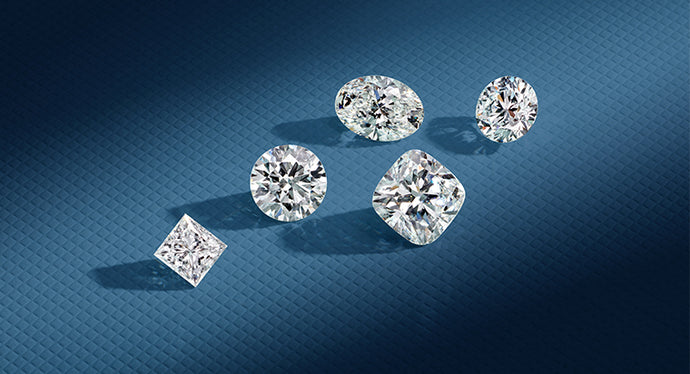In the domain of fine gems, lab diamond rings claws have arisen as a conspicuous choice for knowing buyers looking for both class and manageability. This article digs into the mind boggling universe of lab-grown diamonds, zeroing in on the claws that solid these jewels and the prevalence of man-made diamonds compared over their normal partners. We want to give a far reaching understanding of why lab diamonds have turned into the favored choice for current gems devotees.
Table of Contents
Understanding Lab Diamond Rings
Lab diamond rings are an imaginative progression in the gems business, offering similar brightness and solidness as regular diamonds yet created through fake means. These diamonds are developed in controlled conditions utilizing progressed mechanical cycles that mirror the normal circumstances under which diamonds structure. The outcome is a pearl with a similar physical, compound, and optical properties as a characteristic diamond.
The Advancement of Man-Made Diamonds
Man-made diamonds, otherwise called synthetic diamonds or lab-grown diamonds, address a huge jump forward in diamond innovation. These diamonds are delivered utilizing two essential techniques: High Tension High Temperature (HPHT) and Synthetic Fume Affidavit (CVD).
High Strain High Temperature (HPHT) Diamonds
The HPHT technique repeats the regular states of diamond arrangement by exposing carbon to outrageous tensions and temperatures. This cycle brings about diamonds that are essentially undefined from normal diamonds, both by all accounts and construction. HPHT diamonds are renowned for their outstanding clearness and splendor.
Substance Fume Statement (CVD) Diamonds
CVD diamonds are created utilizing an alternate methodology. In this strategy, carbon-rich gases are ionized in a vacuum chamber, making the carbon molecules store onto a substrate and take shape into diamond structure. This cycle considers the production of diamonds with amazing virtue and consistency, making CVD diamonds profoundly pursued for their consistency and predominant quality.
The Significance of Claws in Lab Diamond Rings
The claws or prongs in a lab diamond ring assume a pivotal part in getting the diamond set up. These metal settings are intended to hold the diamond solidly while expanding its openness to light, improving its brightness and shimmer. The choice of metal and the plan of the claws are fundamental elements in guaranteeing the sturdiness and esthetic allure of the ring.
Kinds of Claws Utilized in Lab Diamond Rings
A few sorts of claws are regularly utilized in lab diamond rings, each offering extraordinary advantages and esthetic characteristics:
1. Four-Prong Paw Setting: This exemplary setting offers a fair methodology, giving more than adequate security while permitting to most extreme light openness. It is great for displaying the diamond’s splendor.
2. Six-Prong Hook Setting: Offering upgraded security, the six-prong setting guarantees that the diamond is solidly held set up, diminishing the gamble of it turning out to be free or removed.
3. Bezel Setting: Here, the diamond is enclosed by a metal edge, giving uncommon security against harm while making a smooth, present day look.
4. Channel Setting: This plan includes implanting the diamond into a section inside the band, offering a smoothed out appearance and improved insurance.
Benefits of Picking Lab Diamond Rings
1. Supportability: Lab diamonds are created with negligible ecological effect, not at all like regular diamonds that often include broad mining tasks. Picking lab-grown diamonds adds to ecological protection and moral practices in the adornments business.
2. Moderateness: Lab diamonds are normally more reasonable than regular diamonds of similar size and quality. This cost-viability permits customers to buy bigger or better stones without surpassing their spending plan.
3. Quality and Virtue: Lab diamonds can be delivered to correct particulars, bringing about stones with outstanding lucidity, variety, and cut. This degree of command over the diamond’s attributes guarantees that purchasers get a result of outstanding quality.
4. Moral Contemplations: Lab diamonds take out worries about struggle man made diamonds and untrustworthy mining rehearses. They give a contention free choice to buyers who are aware of the moral ramifications of their buys.
Choosing the Ideal Lab Diamond Ring
While picking a lab diamond ring, a few variables ought to be considered to guarantee the determination of an excellent piece:
1. Decide the Diamond’s Quality: Evaluate the diamond’s cut, variety, clearness, and carat weight to guarantee it fulfills your guidelines. Lab diamonds can be evaluated involving similar models as normal diamonds, guaranteeing consistency in quality.
2. Pick the Right Hook Setting: Select a paw setting that supplements the diamond’s size and shape while giving satisfactory security. Think about elements like the expected utilization of the ring and individual style inclinations.
3. Select the Metal: Pick a metal that upgrades the diamond’s appearance and suits your style. Famous choices incorporate platinum, white gold, yellow gold, and rose gold.
4. Check Confirmation: Guarantee that the lab diamond accompanies a certificate from a legitimate gemological foundation. This accreditation gives itemized data about the diamond’s quality and authenticity.
Conclusion
Lab diamond rings address a striking combination of innovation and style, offering purchasers a better option than regular diamonds. With their supportability, moderateness, and excellent quality, lab-grown diamonds are ready to rethink the adornments business. By selecting a lab diamond ring with a carefully chosen paw setting, purchasers can appreciate both the magnificence and moral benefits of this inventive jewel.

